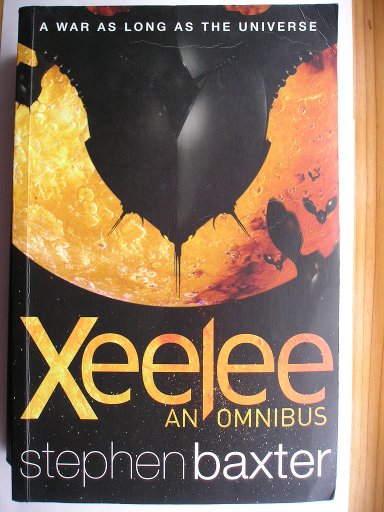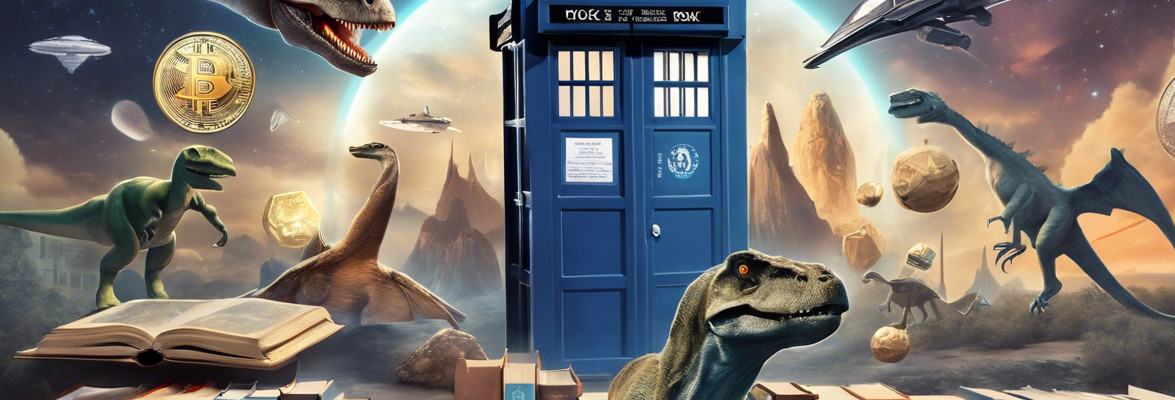
The novel “Ring” by Stephen Baxter was published for the first time in 1994. It’s considered the fourth novel in the Xeelee Sequence.
Lieserl is a person artificially created in a project of an organization called Paradoxa whose purpose is the survival of the human species. Lieserl ages in a day as much as a normal person ages in a year and when she’s about to die her mind is transferred into an artificial interface. Her task is to explore the Sun to understand what’s happening to it.
Paradoxa starts another project that involves sending the starship Great Northern into space in a very long journey that for the crew will last a thousand years at relativistic speed. At the end of the journey, five million years will have passed for the universe and according to the fragmentary information obtained at the time of the great scientist Michael Poole in that future the solar system will die. The task of the Great Northern crew is to use a wormhole to connect the future to their original time to study ways to change the future and save the stars from dying.
“Ring” is partly the sequel to “Timelike Infinity“. It takes place after the disappearance of Michael Poole but the events of “Timelike Infinity” and the fragmentary information that are collected regarding the future lead the organization known as Paradoxa to start major projects to save the human species.
Many times in the presentation of a novel plot the fate of the universe is mentioned to give the reader an idea of grandeur. In “Ring” the fate of the universe is really at stake because the information that came from the future indicate that the stars will die prematurely over the next five million years. It’s therefore vital to understand the cause of death of the stars to try to change the future of the universe.
Stephen Baxter is one of the most famous hard science fiction authors and “Ring” includes an incredible amount of scientific and technological concepts, even more than the other novels in the Xeelee Sequence. The result is very ambitious but inevitably also very complex.
“Ring” is divided into two subplots that go on in parallel until they cross path in the course of the novel. One of the stories is about Lieserl and her extraordinary journey as an artificial intelligence within the Sun. The other story is the journey of the starship Great Northern.
Lieserl takes a very long journey into the Sun going very slowly towards its core. In the first part of her journey, she maintains contacts with humans through a wormhole but over time the contacts become more and more fragmented until they cease.
Through those contacts, Lieserl gets more information about the future of humanity. She goes through the period of the Qax domination, after which humans expand into space like they were affected by a collective madness. It’s the period of the start of the absurd war against the Xeelee, the mysterious and powerful aliens who have their own plans for the distant future.
Humanity is terrified of the idea of suffering a new alien invasion and although the Xeelee never showed hostility, humans start a war against those aliens. The illusion of security through getting rid of any potential threats aventually lead to the downfall of human beings. The Xeelee are completely alien, yet they too are made of baryonic matter in a universe where there are even stranger creatures.
In many of his stories, Stephen Baxter describes very exotic alien life forms: in “Ring” Lieserl discovers the photino-birds, creatures made of dark matter which breed in a very peculiar way, also using baryonic matter during that process.
A type of story that Stephen Baxter seems to like is about very long-term journeys in space. In his anthology “Resplendent”, whose stories are part of the future history told by Baxter in the Xeelee Sequence, there’s the novella “Mayflower II”. Another story of that kind is part of another novel which however is totally independent, “Ark“.
The idea of Stephen Baxter about those long trips is that the mini-society that is formed by the crew eventually collapses. The ways and the consequences of the collapse vary depending on the size of the starship and crew and of course the consequences depend on the duration of the journey but Baxter is indeed pessimistic about those trips.
Despite the title, only in the last part of “Ring” the Great Attractor appears, the immense structure built by the Xeelee which is usually just called the Ring. For millennia, humans have wondered about the purpose of the Ring, eventually the mystery is revealed.
“Ring” can be read independently but contains many references to the novel “Timelike Infinity” and because in a sense it completes it the best thing is to read them both. In “Ring” there’s much more action than in “Timelike Infinity”, in fact “Ring” is in many ways a space opera.
“Ring” is the culmination and the conclusion of the Xeelee Sequence and contains references to the other two novels that compose it, “Raft” and “Flux“. However, these brief references can be understood only by the readers who know those novels.
Overall, I think “Ring” is one of the greatest hard science fiction novels ever written. Even though the characters aren’t particularly developed, as indeed is typical of Stephen Baxter, the amount of ideas and the scale in both space and time in my opinion make it a must-have novel in the collection of all hard science fiction fans.

